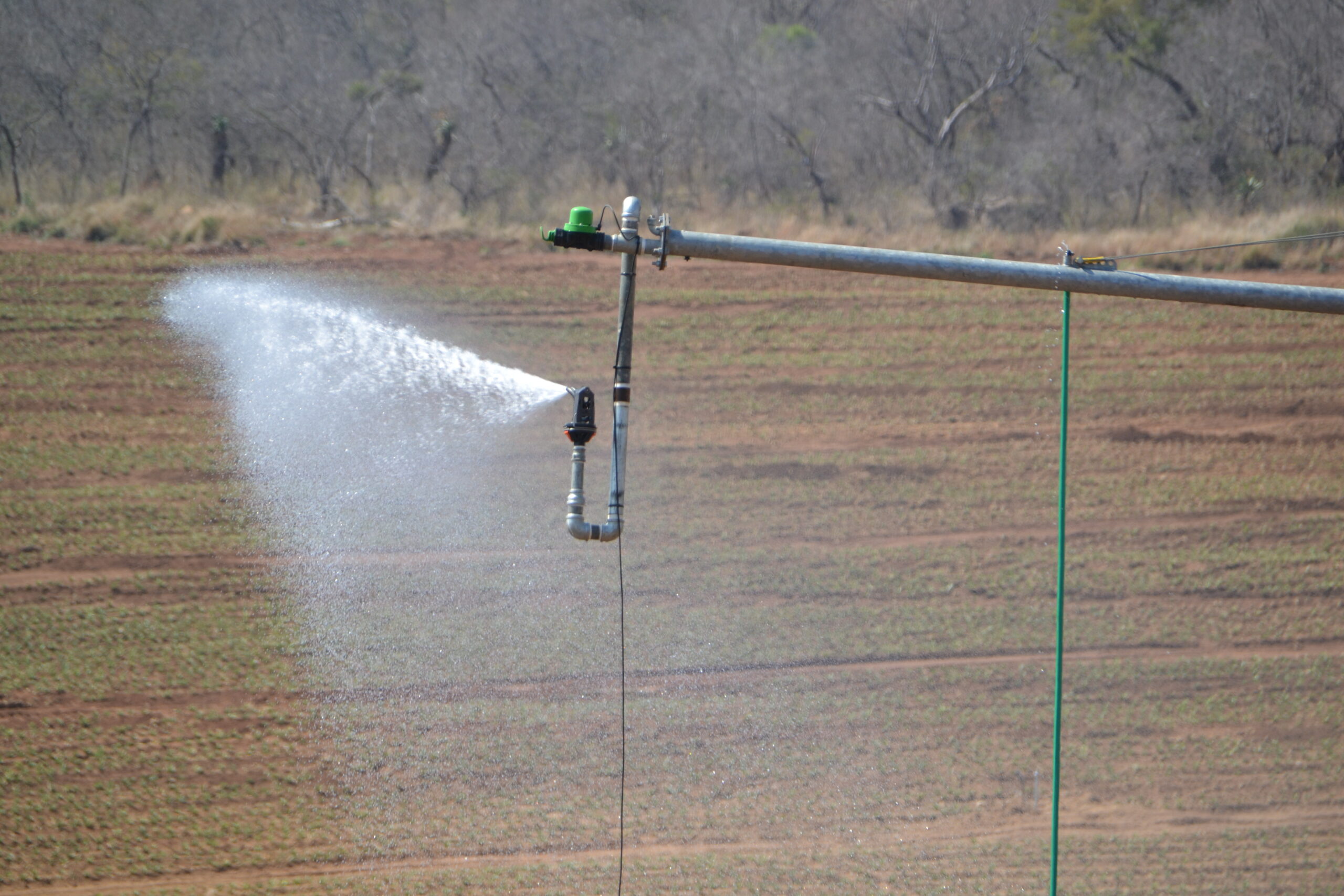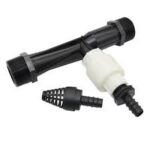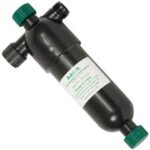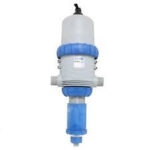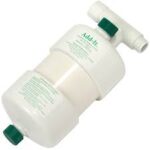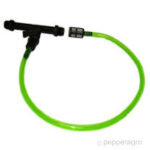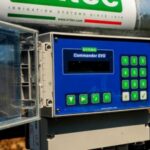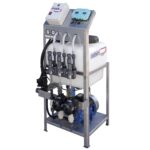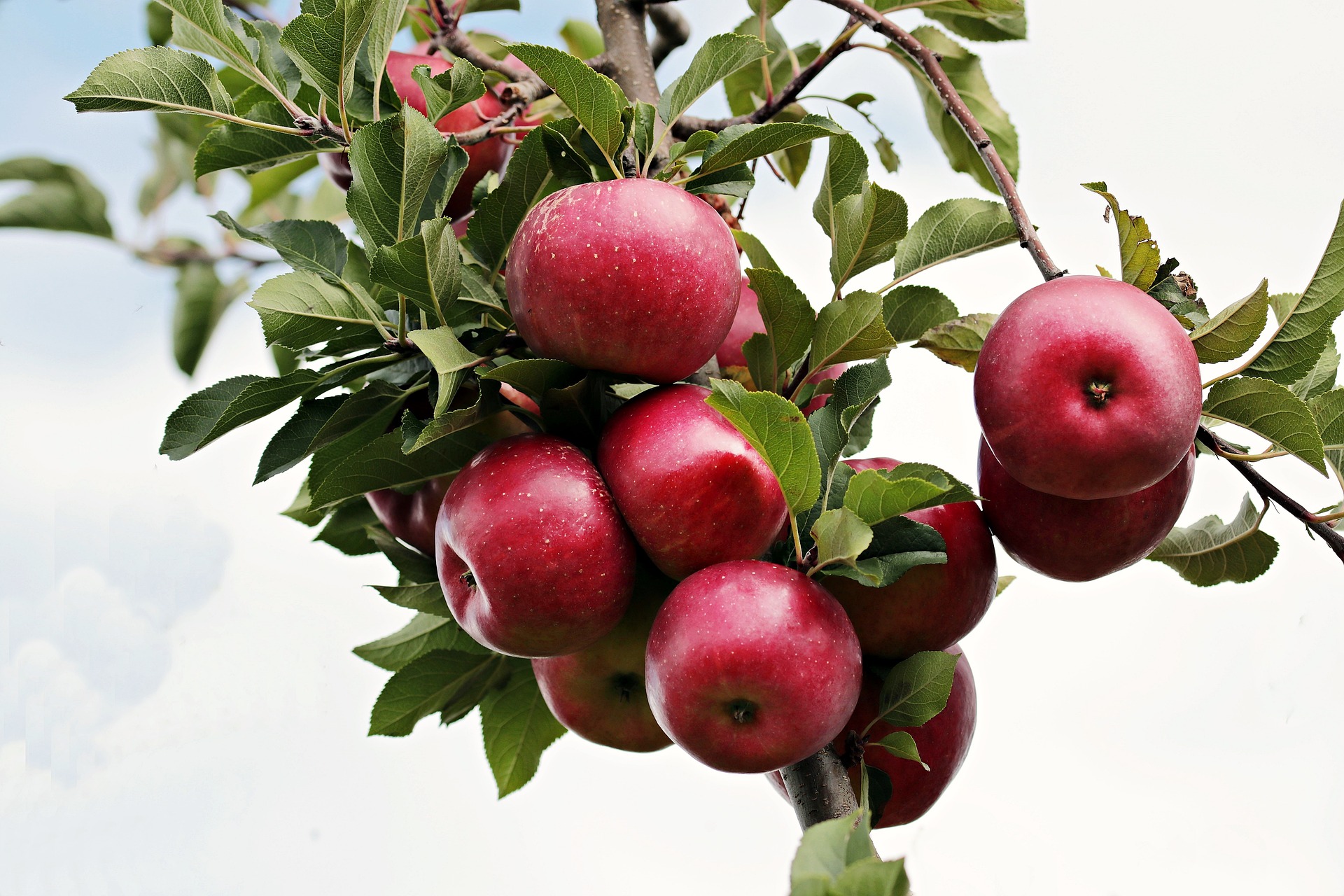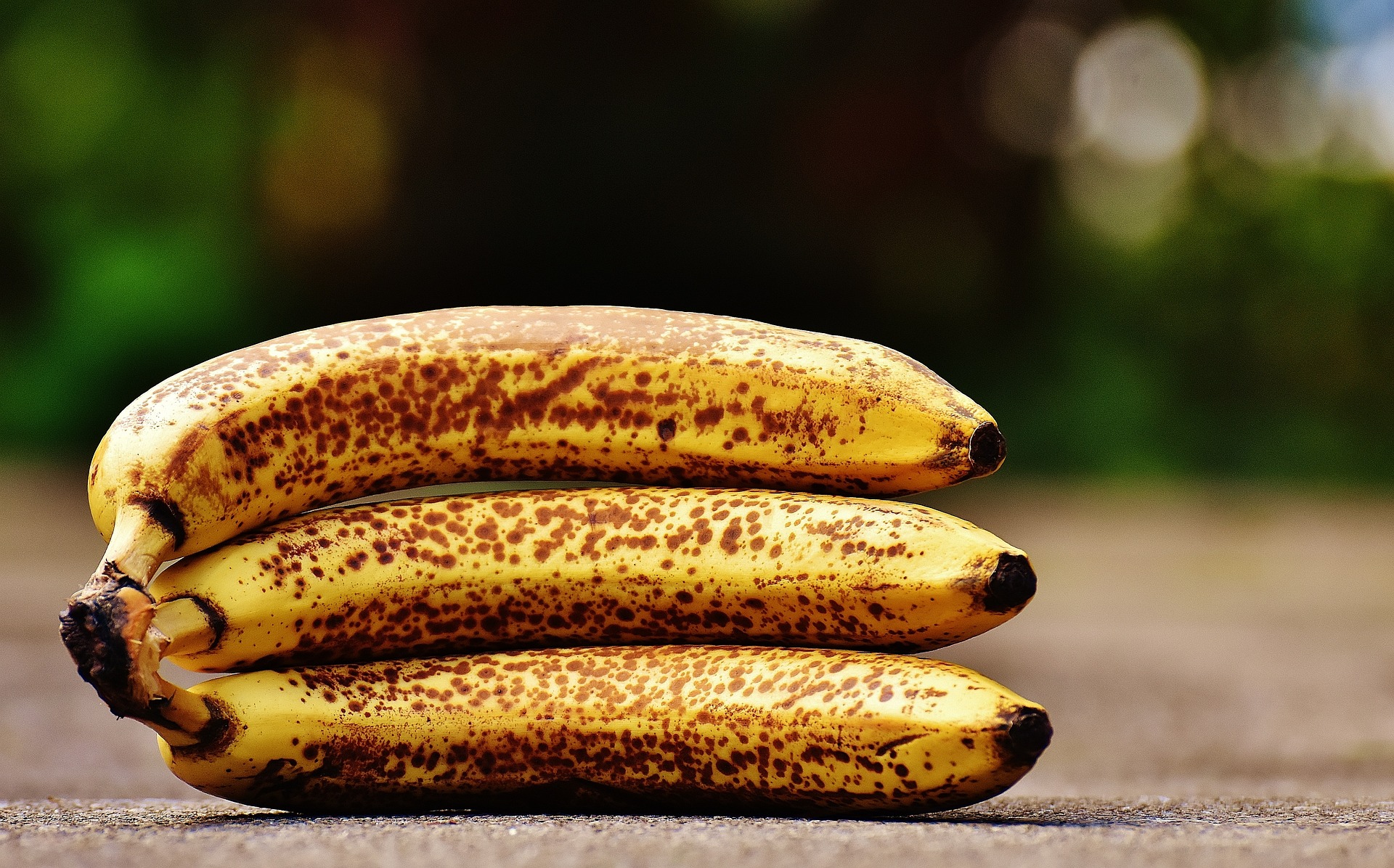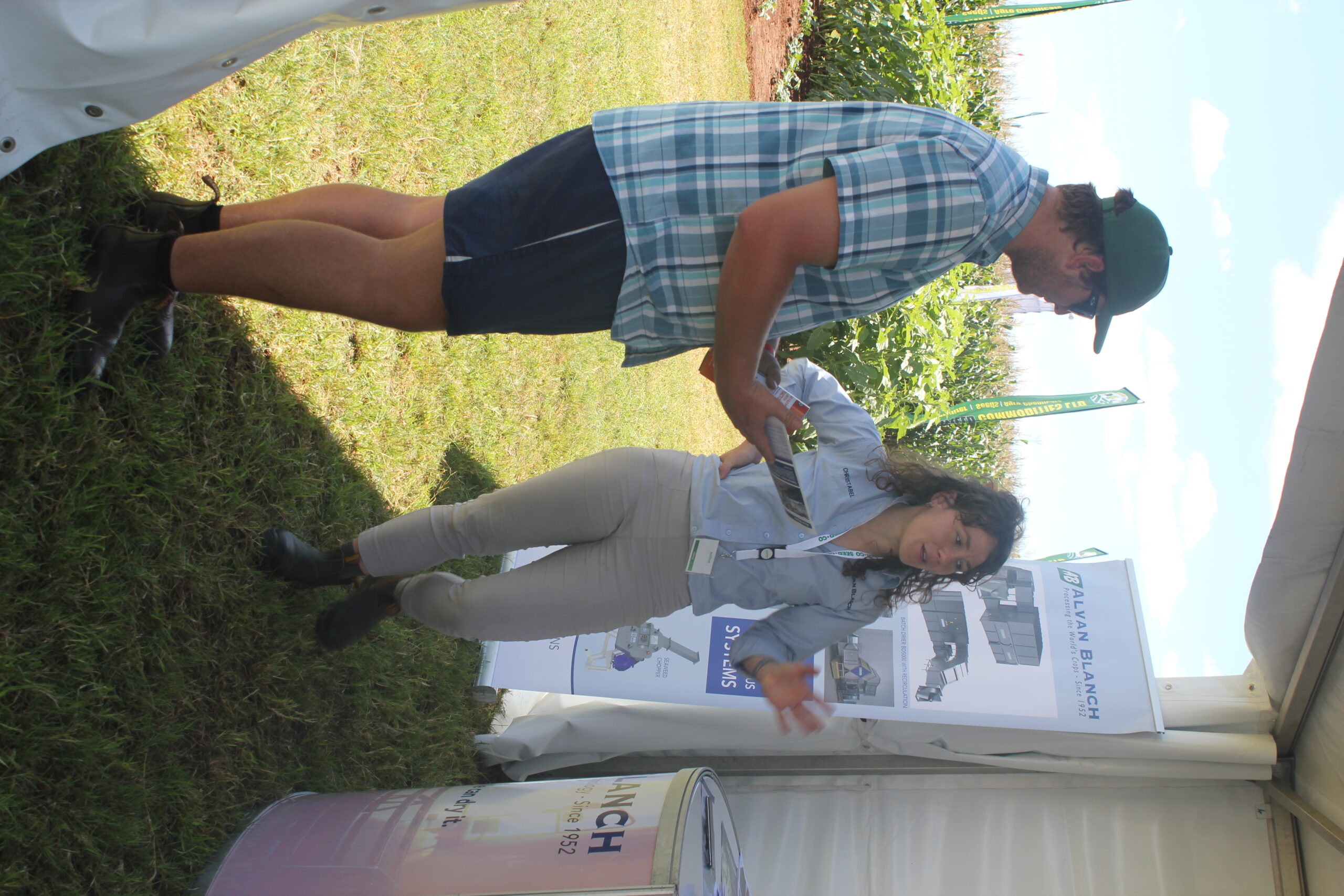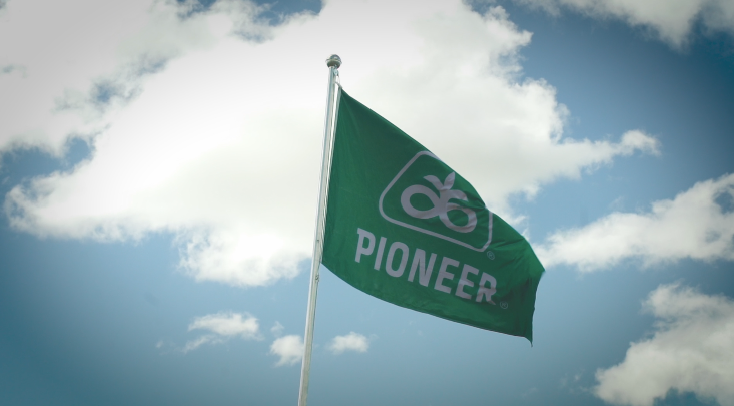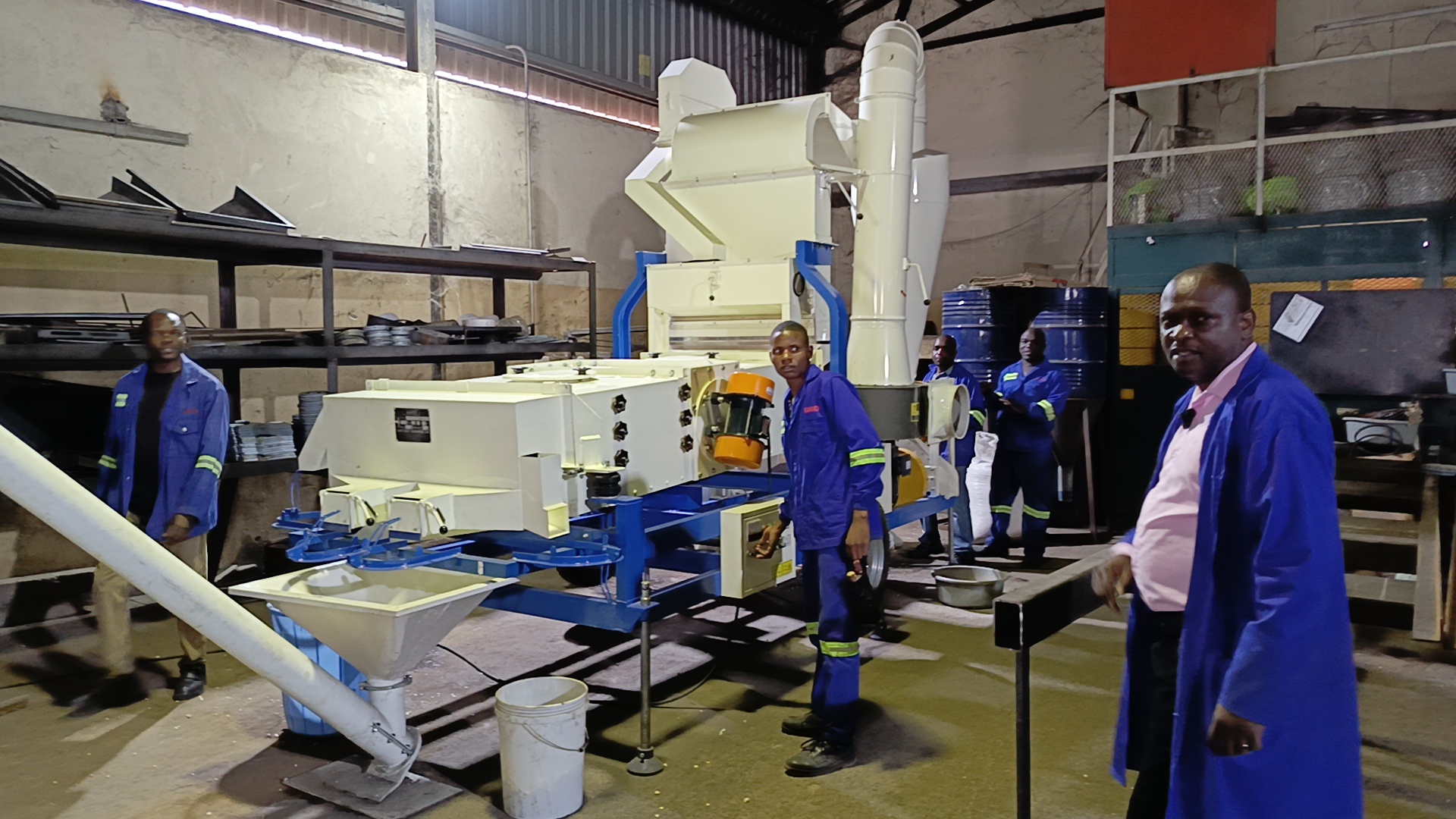A variety of equipment for different methods of fertigation is available in the local trade. The choice lies with the producer on how specialised he wants to operate and which equipment will best suit his management style and the level of expertise of his staff.
If fertigation is applied correctly, it can have an enormous cost benefit for the producer, but equipment that fails can be very costly. Equipment must therefore be of the highest quality, accurate and reliable. The availability of parts and service must also be considered when equipment is chosen. Where possible, the most suitable injectors must be used and if possible, positive displacement pumps due to their accurate injection. The initial cost of equipment is small in relation to harvest losses that can occur as a result of failing of the equipment.
- Picture 2A: Image: aliexpress.com
- Picture 2B: Image: groworganic.com
- Picture 2C: Image: ebay.com
- Picture 2D: Image: groworganic.com
- Picture 2E: Image: Snapdeal.com
Choice between different types of injectors
The following factors influence the choice of injectors:
- Type of irrigation system
- Crop under cultivation
- The flow rate of system and possible flow rate changes as result of the different sizes of blocks.
- Operating pressure of, and additional pressure available in the irrigation system.
- Injection rate.
- Types and quantities of the different fertilisers applied.
- Concentration of the fertilisers to be applied in water.
- Availability of electricity.
- Duration of operation.
- Possible future expansions.
- Safety considerations.
- Will electrical conduction (EC)-control be applied?
- Will pH-control be applied by application of acid or alkali?
- Potential dangers associated with the use of the chemical.
- Is the equipment reliable and resistant to chemicals?
- Will central injection be used or must the equipment be movable?
- To what level will the injection be automated?
- Must fertilisers, e.g. fertiliser mixtures be applied periodically, or can it be injected continually? (Enriched water).
- An example of a pH and electric conduction control system (Image: Irritech.com)
- An automated injection system manufactured by Irritech. (Image: Agriexpo.online)
The above factors can be taken into account to make a logical choice of injectors:
- Is electricity available? This will influence the choice of equipment drastically.
- Examine the operation of the irrigation system and determine whether a constant rate or constant ratio injectors is required. If the block sizes to be irrigated vary, or if the irrigation system moves, it is often better to use constant ratio equipment.
- Determine the flow rates in the irrigation system as well as the cycle lengths. If the system provides for various sizes of blocks, the minimum and maximum flow rates must also be calculated. The injectors must provide the required quantity of fertilisers at all flow rates. The concentration of the fertilisers in the irrigation water must also fall within the required limits.
- Determine the operating pressure of the irrigation system. The injectors must be able to overcome this pressure.
- Determine the layout of the equipment, e.g. consider the different safety factors.
- Ensure that all the equipment can withstand the corrosive characteristics of the different fertilisers at different concentrations.
- Decide whether EC and/or pH-control will be applied.
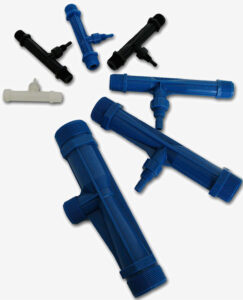
The injectors must be the right size and classification to be able to overcome the pressure created in the system. (Image: wassertech.co.za)
Visit www.arc.agric.za for more information. Next month we shall discuss the types of injectors available.

